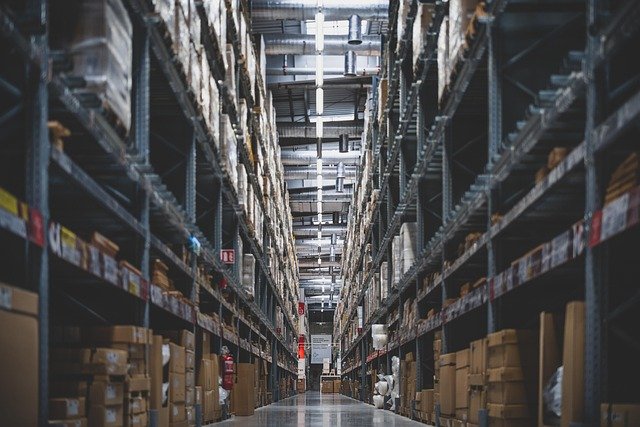Identifying Supply-Chain Exposures Affecting Property Risk
Supply-chain disruptions can alter property risk profiles by changing where goods are stored, how inventory moves, and which facilities are critical. This article outlines practical steps to identify exposures across coverage, valuation, inspection, documentation, and mitigation practices so property owners and managers can better assess vulnerability in a global operating environment.

Supply-chain exposures increasingly shape property risk as companies shift warehousing, sourcing, and logistics across regions. Changes in supplier reliability, rerouted shipping, or concentrated inventory can increase the likelihood and severity of physical loss, business interruption, and liability. This article explains how to identify exposures that affect property risk, tying together practical inspection, documentation, valuation, and mitigation steps to help risk managers and property stakeholders make informed decisions.
How does coverage influence property exposure?
Coverage review is the starting point for identifying supply-chain-related property exposures. Insurance policies define what losses are included, limits, deductibles, and any territorial or commodity exclusions. When a supply chain reroutes inventory to alternate warehouses or engages third-party logistics providers, policy terms for storage locations and transit must be checked. Clarify whether a policy covers off-site storage, inland transit, and consignments, and whether interruption coverage extends to losses caused by upstream supplier failures. Accurate documentation of inventory locations and changes keeps coverage aligned with actual operations and reduces gaps when claims are filed.
What role does valuation and documentation play?
Valuation methods determine the amount recoverable after a loss. For stock and inventory, replacement cost versus actual cash value, and provisions for obsolete or in-transit goods, are important. Proper documentation—purchase invoices, bills of lading, supplier contracts, and inventory ledgers—supports valuation and expedites claims. Maintain records of stock-keeping units (SKUs), lot numbers, and original purchase prices, and document any custom or high-value items separately. Robust documentation also helps insurers and auditors verify declared values and prevents underinsurance that can amplify post-loss financial exposure.
How do inventory and maintenance affect risk?
Concentration of inventory and deferred maintenance raise hazard potential. Centralizing high-value stock in a single facility can create a single point of failure; diversifying storage across multiple sites can reduce that exposure. Maintenance programs influence the probability of physical perils, such as mechanical failure, electrical incidents, or fire spread. Track safety-critical maintenance tasks, spare-part inventories, and environmental controls (temperature, humidity) for sensitive goods. Regularly reconcile physical inventory counts with electronic records to detect discrepancies that might signal theft, spoilage, or misplacement risks tied to supply-chain changes.
How are inspections used to identify hazards?
Routine inspections flag changing hazards that result from supply-chain adjustments. When new logistics partners, temporary storage yards, or additional racked storage are introduced, inspections should assess structural loading, fire protection adequacy, access for emergency services, and segregation of incompatible materials. Use standardized checklists and photographic documentation during inspections, and update risk registers to reflect newly identified hazards. Inspection frequency should increase after major operational changes—such as introducing flammable materials, increasing throughput, or changing handling procedures—to capture new or evolving exposures promptly.
How do interruption and claims intersect in losses?
Business interruption risk often flows from upstream supplier failures, transport delays, or port closures, creating knock-on property impacts like backlogs that increase storage density or prolong exposure to transit perils. Claims handling depends on clear documentation of lost revenue, additional expenses, and causal links to physical damage or covered civil events. Prepare claims files proactively by preserving invoices, production logs, supplier correspondence, and proof of attempts to mitigate losses. Early notification and transparent communication with insurers support efficient claims assessment and reduce disputes over causation or scope.
What global factors shape mitigation and policy choices?
Global supply chains create cross-border exposures: differing regulatory regimes, variable infrastructure resilience, and geopolitical tensions can all affect property risk. Mitigation strategies include geographic diversification of suppliers and storage, contractual protections with logistics partners, and investment in redundancy for critical components. Policy choices should reflect global realities—confirm territorial coverage, consider contingent business interruption endorsements tied to specific suppliers or ports, and evaluate local regulatory requirements for storage and fire suppression. Integrating global risk intelligence into property risk assessments helps align mitigation priorities with policy language.
Property risk driven by supply-chain exposures is dynamic and requires a coordinated approach across insurance, operations, and procurement. Regularly reconcile coverage to actual operations, maintain thorough valuation and documentation, perform focused inspections after operational changes, and adopt inventory and maintenance practices that reduce hazard concentration. Mapping interruption scenarios and preparing claims documentation in advance further strengthens resilience. Together, these steps provide a structured method to identify and address the property risks that arise from complex, global supply chains.





